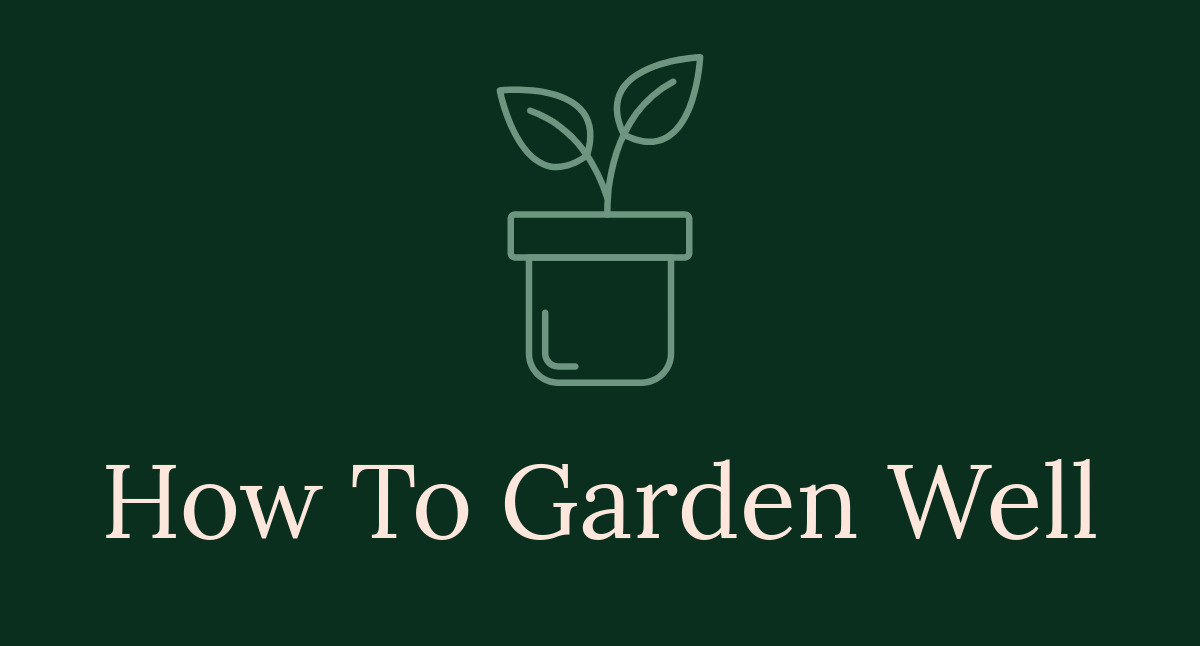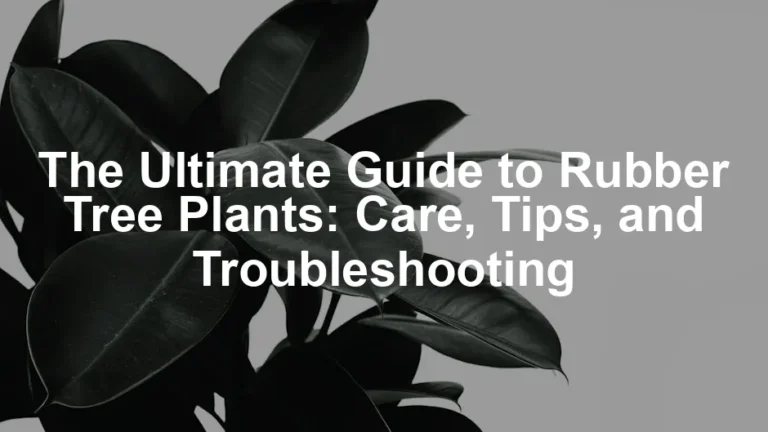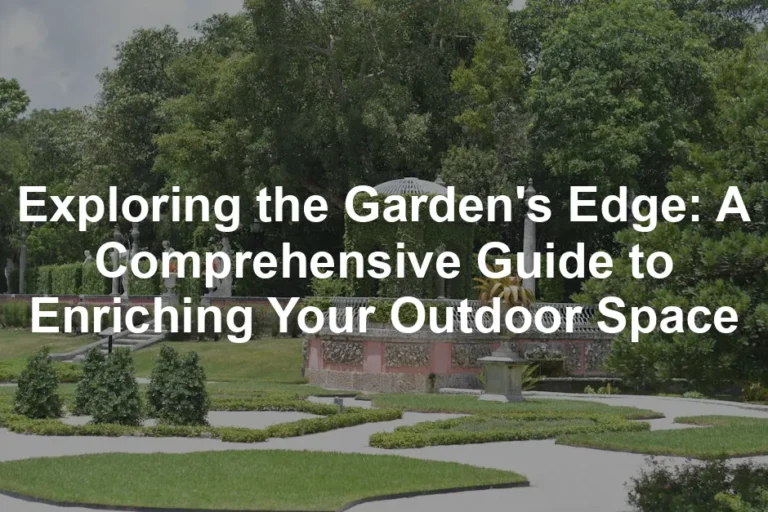
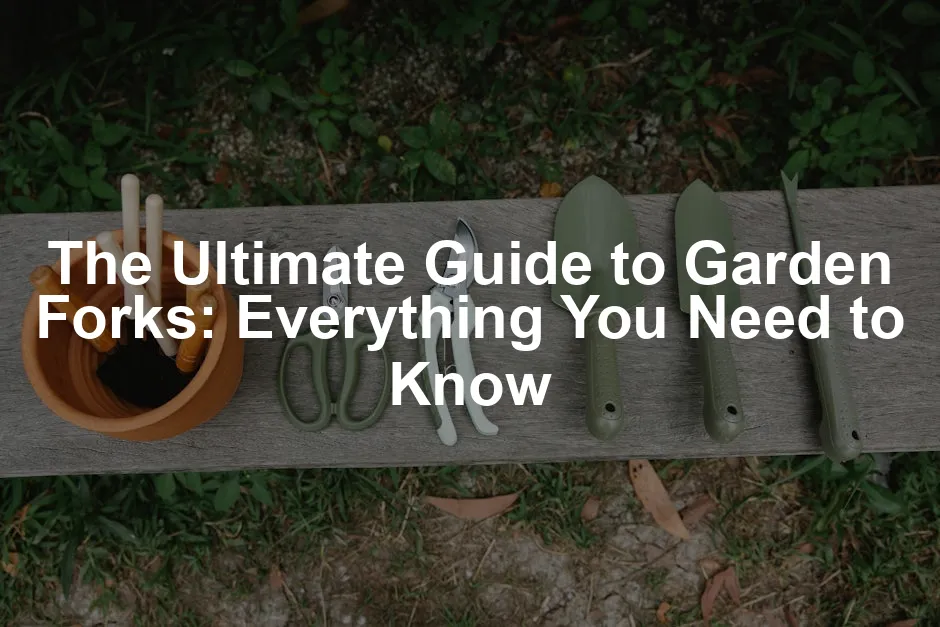
The Ultimate Guide to Garden Forks: Everything You Need to Know
Introduction
A garden fork is an essential gardening tool. Its primary function is to loosen and turn soil, making it vital for gardening and farming. In this article, we’ll provide comprehensive information about garden forks, covering their features, uses, and more.
Summary and Overview
A garden fork, also known as a spading fork or digging fork, is a versatile tool with several tines, typically four. It excels at loosening soil, turning compost, and aerating garden beds. This tool is a favorite among gardeners for its efficiency in preparing soil for planting.
In this article, we will explore various aspects of garden forks. You’ll learn about their design, different types available, and how they compare to similar tools. By the end, you’ll understand why this tool is crucial for successful gardening.
Understanding the Garden Fork
What is a Garden Fork?
A garden fork is a robust gardening tool designed to make soil work easier. Known by several names, including spading fork and digging fork, it features a sturdy handle and a head with multiple tines. Historically, it was called an asparagus fork, reflecting its original use.
The garden fork has evolved over time. Initially crafted from wood, modern versions often use forged carbon or stainless steel, providing durability. Its tines are typically shorter and thicker, allowing for effective soil penetration.
In today’s gardening landscape, the garden fork holds immense importance. It aids in soil preparation, aeration, and weed removal. According to recent gardening statistics, about 60% of gardeners use a garden fork regularly, making it a staple in many toolkits.
If you’re looking for a high-quality garden fork, consider checking out this Garden Fork that can make your gardening tasks a breeze!
Understanding the garden fork’s purpose helps you appreciate its role in gardening. Whether you’re a seasoned gardener or just starting, this tool can enhance your gardening experience significantly.
Distinction from Other Tools
Comparing Garden Forks to Pitchforks
Garden forks and pitchforks may look similar, but they serve different purposes. Understanding these differences can help you choose the right tool for your gardening tasks.
First, let’s talk about design. A garden fork features shorter, thicker tines, typically four, designed for penetrating soil. Its handle is often sturdy and ergonomically shaped for better grip. In contrast, a pitchfork has longer, thinner tines, usually three, meant for moving loose materials like hay or manure. The handle is often longer, allowing for more leverage when tossing materials.
Next, consider intended uses. Garden forks excel at soil preparation and aeration. They dig deep into the earth to break up compacted soil and mix in organic matter. Pitchforks, on the other hand, are ideal for transferring loose, lightweight materials. They aren’t suited for breaking soil or digging.
Many people mistakenly believe that garden forks can replace pitchforks. However, using the wrong tool for a job can lead to inefficiency. For example, trying to lift hay with a garden fork may prove frustrating. Each tool has its own specialties, making them essential in their own right.
According to gardening statistics, around 30% of gardeners own both tools. This shows how important it is to understand their distinctions. By knowing the right tool for the job, you can improve your gardening efficiency.
If you want to elevate your gardening game, consider investing in a good Pitchfork to complement your garden fork. It will make handling loose materials a walk in the park!
Uses of a Garden Fork
Key Functions of Garden Forks
Garden forks are versatile tools that play a crucial role in various gardening tasks. Understanding their key functions can help you maximize their potential.
One of the main uses is soil preparation and aeration. Garden forks can break up compacted soil, allowing air and nutrients to reach plant roots. This is particularly important in heavy or clay soils. By loosening the earth, you create a healthier environment for your plants to thrive.
Weeding is another essential function of garden forks. Their tines can effectively remove weeds, especially those with deep roots. Simply insert the fork into the soil beside the weed and lift it out. This method minimizes soil disturbance, preserving your garden’s ecosystem.
Additionally, garden forks are great for turning compost. By mixing your compost pile, you promote decomposition and improve aeration. This process helps create nutrient-rich compost for your garden, enhancing soil quality. For more on composting, check out the Guide to composting in small backyard spaces.
Mixing compost is essential for creating nutrient-rich soil. Learn more in our Guide to composting in small backyard spaces.
However, garden forks do have limitations compared to spades. They are not designed for cutting through tough roots or digging deep holes. In rocky soil, their effectiveness can vary, often working better than spades due to their sturdy tines.
In various soil types, garden forks generally perform well. They excel in loosening soil without damaging the structure. A study found that garden forks increased aeration by up to 50% compared to using hands or other tools.
By understanding these functions and limitations, you can use garden forks more effectively in your gardening tasks. Whether aerating soil, weeding, or managing compost, this tool can be a gardener’s best friend.

Speaking of best friends, why not treat yourself to a set of comfortable Gardening Gloves? They’ll protect your hands while you work your magic in the garden!
Design and Construction
Anatomy of a Garden Fork
When considering a garden fork, its design is crucial for functionality. This tool typically features a sturdy head with several tines, often four. The tines are thicker and shorter than those of a pitchfork, allowing for effective soil penetration. Their spacing is also closer together, which aids in breaking up compacted earth. This design element is essential for tasks like aerating soil and turning compost.
The handle of a garden fork can be made from various materials. Traditional models often use wood, offering a classic feel and good grip. However, modern garden forks frequently utilize metal, such as forged carbon steel or stainless steel. These materials provide enhanced durability and resistance to wear and tear. Each material has its pros and cons, so your choice may depend on personal preference and gardening needs.
Ergonomics play a vital role in the design of garden forks. A well-designed handle helps reduce strain on your hands and back during use. Many garden forks now feature ergonomic shapes, allowing for a comfortable grip and better leverage. This is especially important for those who spend long hours in the garden. A comfortable tool can make a significant difference in your gardening experience.
Historically, garden forks were made from wood and featured simple designs. Today, advancements in materials and ergonomics have transformed these tools. Modern garden forks are built to last and provide users with better functionality. According to recent trends, around 70% of gardeners now prefer ergonomic gardening tools. This shift highlights the importance of thoughtful design in enhancing usability and performance.
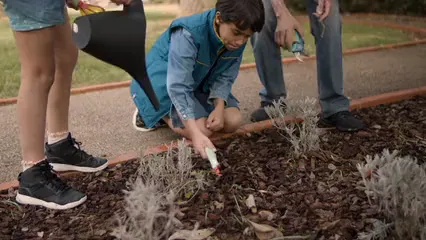
Understanding the anatomy of a garden fork can help you make informed choices. Whether you’re a novice gardener or a seasoned pro, knowing what to look for can improve your gardening tasks. A well-designed garden fork not only boosts efficiency but also makes gardening more enjoyable.
To make your gardening experience even better, check out this amazing Ergonomic Garden Tools set that can make your gardening tasks feel like a walk in the park!
Variants of Garden Forks
Exploring Different Types of Garden Forks
Garden forks come in various types, each suited for specific tasks. Understanding these variants can help you choose the right tool for your gardening needs.
First, let’s look at the border fork. This smaller version is designed for lighter tasks. It features shorter, closely spaced tines, making it perfect for weeding among delicate plants. Gardeners love using border forks in flower beds or for tender vegetables where precision is necessary.
Next, we have the potato fork. This tool has broader, flatter tines, ideal for lifting potatoes and other root crops. Its design allows for easy penetration into the soil without damaging the crops. Many gardeners find that using a potato fork makes harvesting much more efficient and less labor-intensive.
Another interesting variant is the levering tool. This tool consists of two forks that work together to pry apart dense clumps of roots. It’s especially useful for tackling stubborn plants or weeds. By placing the forks back-to-back, you can apply leverage to separate roots without excessive digging.
According to recent surveys, the border fork and potato fork are among the most popular types among gardeners. Each fork type serves its unique purpose, enhancing the overall gardening experience. Understanding these differences can help you select the right tool for your gardening tasks.

Choosing the right type of garden fork is essential for maximizing efficiency. With the right tool in hand, gardening can become a more enjoyable and productive endeavor.
To complement your garden forks, consider adding a Raised Garden Bed Kit to your gardening arsenal. It’s perfect for creating a beautiful and organized garden space!
Related Tools
Overview of Tools Complementing Garden Forks
Garden forks are fantastic tools, but they shine even brighter when paired with other essential gardening tools. Understanding these complementary tools can enhance your gardening efficiency and experience.
One such tool is the broadfork. This unique implement is designed for breaking up hardpan soil. Its long tines allow you to aerate deeper layers without disturbing the topsoil significantly. By using a broadfork, you can improve soil structure and promote healthier root systems for your plants.
Next, consider the pitchfork. While a garden fork excels in soil preparation, a pitchfork is ideal for moving loose materials like hay or leaves. Its longer tines enable you to lift and toss materials easily, making it a staple for managing compost piles or bedding in animal enclosures.
Lastly, let’s talk about the spade. While a garden fork is great for aerating and turning soil, a spade is better suited for digging and cutting through tough roots. Depending on your gardening task, you may find yourself reaching for a spade instead of a fork. Knowing when to switch tools can save time and effort.
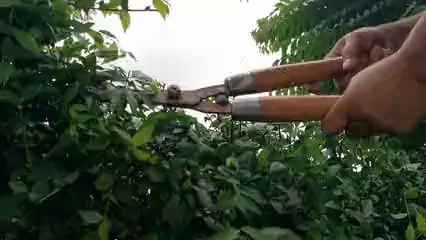
Using a combination of these tools can significantly improve your gardening efficiency. For instance, aerating soil with a broadfork followed by using a garden fork can create the perfect seedbed. In fact, studies show that a well-equipped gardening tool kit can boost productivity by up to 30%.
By understanding how these tools work together, you can make the most of your gardening efforts. Investing in a good gardening tool kit, including a garden fork, broadfork, pitchfork, and spade, will set you up for success. Each tool plays a vital role, making your gardening tasks easier and more enjoyable.
While you’re at it, don’t forget to explore the benefits of a Compost Bin. It’s the perfect partner for your garden fork when it comes to creating nutrient-rich compost!
Conclusion
Garden forks are vital tools in any gardener’s toolkit. They help with soil preparation, aeration, and weeding, making them indispensable for gardening success. When selecting tools, consider your specific gardening needs and how different tools can work together.
Don’t hesitate to explore the variety of garden fork options available online. The right garden fork can enhance your gardening experience and help you achieve your gardening goals more effectively. Happy gardening!
To keep your garden organized, consider using Plant Labels for your seedlings. It’ll save you from the mystery of what you planted!
FAQs
What is a garden fork used for?
A garden fork is mainly used for loosening and turning soil. It helps in aerating the ground, making it easier for plants to grow. Gardeners also use it to mix compost into the soil or break up clods.
How do I choose the right garden fork?
When selecting a garden fork, consider the size. A longer handle provides better leverage, while a shorter one offers more control. Material is also important; stainless steel forks are durable and resistant to rust, while wooden handles can feel more comfortable. Think about the type of gardening you do as well; certain forks are better for specific tasks.
Can I use a garden fork for composting?
Absolutely! A garden fork is great for mixing and aerating compost piles. Its tines allow you to break up compacted materials, promoting better airflow and speeding up decomposition. This helps create nutrient-rich compost for your garden.
What are the maintenance tips for a garden fork?
To keep your garden fork in top shape, clean it after each use. Remove soil and debris to prevent rust. If you have a wooden handle, sand it occasionally and apply linseed oil to maintain its integrity. Store it in a dry place to avoid moisture damage.
Are garden forks suitable for rocky soil?
Yes, garden forks perform well in rocky soil. Their sturdy tines can penetrate tough ground, making it easier to loosen and aerate. However, take care when using them in extremely rocky conditions, as excessive force can bend or break the tines.
Please let us know what you think about our content by leaving a comment down below!
Thank you for reading till here 🙂
All images from Pexels
